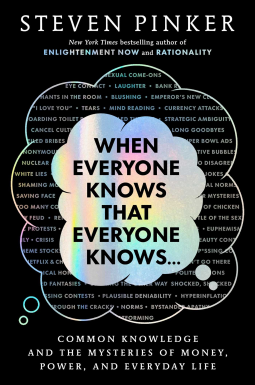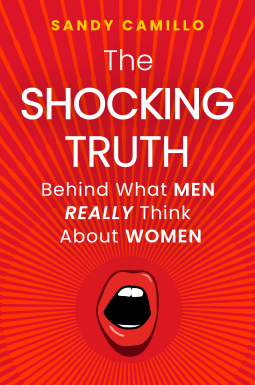Egyptian hieroglyphics confounded Egyptologists for centuries until the discovery of the Rosetta Stone.
The Voynich Manuscript is another old text that has perplexed experts since its discovery about 500 years ago.
Dr. Robert H. Edwards specializes in investigating the biggest mysteries of the 20th century. I interviewed him on the 100th anniversary of George Mallory's death. I interviewed him again after we found Mallory's climbing partner's foot. Spoiler: We still don't know whether they reached Everest's summit.
The other mystery Edwards investigated was D. B. Cooper, who stole $200,000 and disappeared after skydiving.
Now, Edwards turns his analytical brain to the world's most mysterious manuscript: the Voynich Manuscript.
Voynich Reconsidered: The Most Mysterious Manuscript in the World is Dr. Edwards's attempt at decoding this headache-producing document. If you think James Joyce's Finnegans Wake is hard to decipher, try the Voynich Manuscript!
Here is my interview about the Voynich Manuscript with Dr. Edwards:
Video
Podcast
Excerpts from Voynich Reconsidered
The parchment for these four folios was most probably produced sometime in the first half of the fourteenth century.
Who wrote the Voynich Manuscript?
Nobody knows. Edwards debunks the idea that Roger Bacon authored it:
D’Imperio devoted considerable effort to the study of the supposed link between the manuscript and Roger Bacon. She could not have known that the Voynich parchment would eventually be submitted to radiocarbon technology and that the samples would be dated, with up to 92 percent probability, to periods ranging between 1308 and 1458. Therefore, she could not have known that Bacon, who lived in the thirteenth century, would be excluded as the author of the manuscript, or at least as its producer or as one of its scribes.
Is the Voynich Manuscript a hoax?
Before we embark on our own voyage of investigation of the Voynich manuscript, we must consider the alarming possibility that it is a journey to nowhere. That is to say: it may be that the manuscript cannot be translated or deciphered because it has no intrinsic meaning. For want of better words, we must consider that the manuscript could be a hoax or a forgery.
What's the Voynich Manuscript about?
There is an “herbal” section, consisting of 129 pages and thereby comprising more than half of the book.
The astronomical, cosmological, and astrological sections are short. Edwards is "tempted to group them together into a 'cosmic' theme, occupying thirty-one pages."
The Voynich manuscript invites, for those who are so disposed, the insertion of a preconceived narrative. In this respect, it bears comparison with the notorious proliferation of narratives relating to the man who came to be known as D.B. Cooper, and his hijacking of Northwest Airlines Flight 305 on November 24, 1971.
Do we know what the Voynich Manuscript's message is?
For many years, the mission controllers at NASA resisted demands for another photographic targeting of the “Face. ” Finally, they relented. In 2001, the Mars Global Surveyor took the first new image of the object, at a much higher resolution than that of the Viking. It was revealed to be an eroded mesa with a pleasing symmetry, and certainly with gulleys and hollows that conveyed elements of a human face. Whether that is the end of the story, the reader may decide. This author is content for the mesa to be the product of erosion, by wind or by water, and not the work of ancient Martians, however much we would like it to be so. Likewise, determined researchers of the Voynich manuscript can find, within its cryptic and inscrutable pages, that which they wish to find
Conclusion
I loved Dr. Edwards's other two books (Mallory & Cooper). Although I liked this one about the Voynich manuscript, it's such an inscrutable and inaccessible document that I found it challenging to stay engaged.
Moreover, I don't understand why some people believe that old documents are worth much more than their historical value. Religious texts are helpful because they reveal the values and ideas of the past, but are often utterly wrong, especially when it comes to scientific facts. Even when they're not mistaken, they're often incomplete. A modern botanist knows far more about plants than a 14th-century writer.
Some fans of the Voynich manuscript seem to believe that if we can somehow decode it, we'll learn a mind-bending revelation. I doubt it.
Other fans, including Dr. Edwards, find the Voynich manuscript fascinating for the same reason people are drawn to Sudoku or a crossword puzzle: it's fun to solve a mystery even if it yields little practical benefit.
If you're drawn to puzzles and the Voynich manuscript, you must buy the Voynich Manuscript and then read Voynich Reconsidered: The Most Mysterious Manuscript in the World. You're guaranteed to learn countless remarkable facts about the manuscript in Dr. Edwards's splendid and thorough analysis.
For others, I'd first start by reading Dr. Edwards's other two books, which are more accessible than this one.
Verdict: 7 out of 10 stars.





